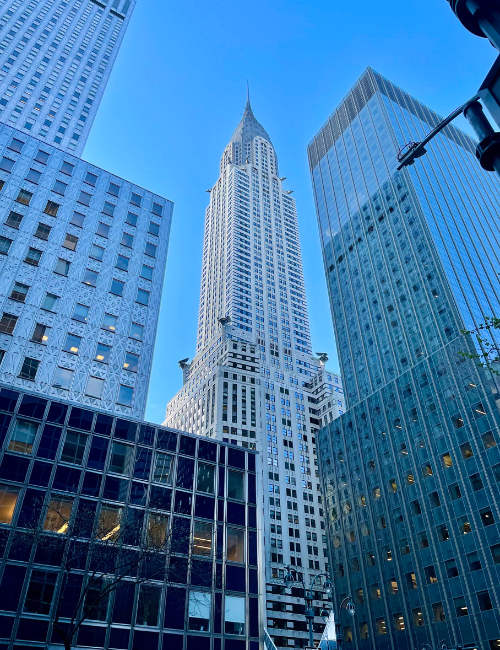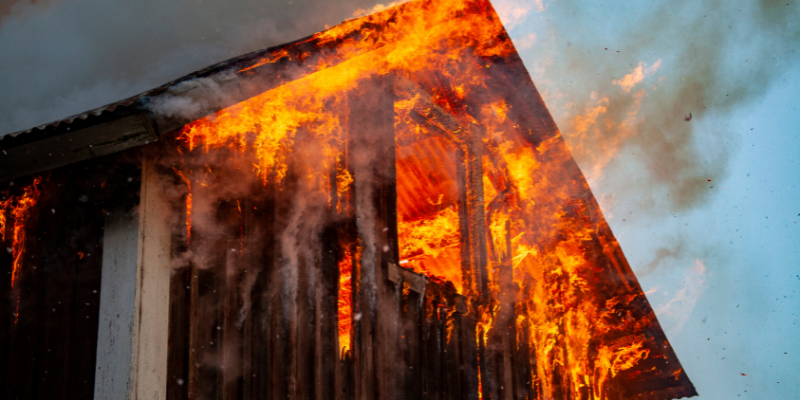
In New York, selling a fire-damaged home is a complicated scenario, but it is possible when approached correctly. This guide from Prestige Home Buyers outlines the intricacies of the local market, addressing legal considerations, marketing strategies, and other key factors that contribute to a successful sale. Whether you need advice on repairs or want to connect with the right buyers, this resource is designed to help you understand the complexities of selling a fire-damaged home in New York and get the most value from your property.
Key Highlights
- Understanding the intricate impact of fire damage is crucial for evaluating property value in NY.
- Exploring diverse selling options, including cash buyers, can streamline selling a fire-damaged home.
- Complying with legal and disclosure obligations is vital to avoid potential sales pitfalls.
- Effective marketing strategies and competitive pricing are key to attracting interested buyers.
- Investing in necessary repairs and restoration can enhance property appeal and sales potential.
Understanding the Impact of Fire Damage on Property Value
Fire-damaged properties require a nuanced understanding of how fire damage impacts a property’s value. The presence of fire-damaged homes within a community forces an evaluator to navigate multiple frameworks: the nature of the damage, its extent, and local market conditions. Sellers of damaged property must determine the important value drivers and the property’s value within the local market. Knowledge of the local market value and drivers is particularly important within New York due to the complexity of its real estate system. Comprehensive and careful planning and research within the New York market can streamline the selling process and yield optimal results.
Assessing a Fire-Damaged Property’s Value in New York
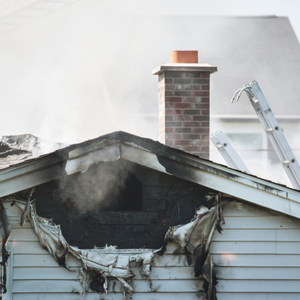
Assessing the worth of a fire-impacted New York property entails considering more than a market comparison. Pricing starts with assessing the damage—both the apparent and the underlying fire damage. Damage evaluation should include a thorough examination of the building’s integrity, evaluation of any smoke, and assessment of the damage done by the water employed to put out the fire. Without these steps, the property’s attendant risks cannot be fully identified, the required repairs cannot be calculated, and the value lost from the fire cannot be determined. Repair costs have direct implications for the property’s market value and the interest of prospective buyers. Hence, property owners should always obtain multiple repair estimates from licensed professionals.
In New York, the extent of the damage a property has incurred depends on the specific market conditions. Properties situated in areas with high demand or proximity to critical services may suffer a loss of value, but will still be priced significantly. Properties in less active markets will likely lose value, and higher sales price reductions will be needed to sell to the market of buyers. Comparable sales of both repaired and damaged properties will offer great insight to the seller to set a competitive price. Unresolved and pending insurance claims will be critical and affect the value the buyer will perceive. Sellers, in conjunction with appraisers, real estate agents, and attorneys, need to understand New York’s market in order to position the property accurately and sell it in a reasonable and honest manner. This way, the seller will obtain the necessary information to sell the property appropriately.
Factors Affecting the Sale of a Fire-Damaged House
Many issues determine how quickly and how profitably a fire-damaged house in New York can be sold. Of these issues, the severity of the fire damage is critical. Fire-damaged houses with only superficial fire damage draw interest more quickly compared to other houses. Additionally, houses with severe fire damage require more extensive price cuts to be attractive to cash buyers and loss investors. Trust and confidence reporting ease buyers’ fears. Trust reporting is generated by providing detailed inspection reports and repair estimates. Documented prior repair work also assists in building trust. Repair work and repairs in progress ease buyers’ concerns. Location is one of the most critical factors. Fire-damaged homes in fire-damaged neighborhoods are less desirable than the homes in non-fire-damaged neighborhoods. Fire-damaged homes in desirable neighborhoods are less negatively perceived by buyers.
The selling process is also shaped by market conditions, buyer behavior, and the law. In competitive or inventory-limited markets, even damaged properties may turn over quickly. In slower markets, approaches like seller financing or outreach to investors may be necessary to close a deal. Buyers may also be emotionally affected by a property that has suffered a fire. In such cases, the potential for redevelopment is a positive to pivot towards. Finally, New York’s disclosure law is particular, and the seller is the one legally accountable for ensuring all descriptions of fire damage and insurance claims are disclosed to avoid contested liability. This is best done in partnership with an experienced attorney/agent combination to streamline the process and maximize profitability for all parties involved in the transaction.
The Selling Process: Step-by-Step Guide
The process of selling a fire-damaged house in New York is painstakingly elaborated in the guide in the form of a stepwise method. The first step requires a comparison of different available options for listing the fire-damaged home. The pros and cons of every approach in the selling process need to be analyzed. After the most preferable option is selected, the next steps will include the understanding of New York’s selling methods, which include a traditional approach and different alternatives. This knowledge will allow you to gain the best possible selling position and adjust the selling method to your preference. If all these steps are efficiently executed, your chances of selling the house will considerably improve, or you can choose to sell your home for cash in Queens or nearby cities for a faster and more convenient solution.
Exploring Options for Selling a Fire-Damaged House in New York
Determining the best way to sell a fire-damaged house in New York comes down to weighing your options. Given the condition of a fire-damaged house, a property owner may not want to pursue a typical listing with a real estate agent. In these cases, alternative options, such as cash buyers or specialized real estate investors, can offer a quicker and more practical alternative. For sellers eager to avoid time-consuming negotiations and extensive repairs, cash buyers offer an advantageous option. In fact, some cash buyers provide “as-is” purchase proposals, which allow sellers to bypass costly renovations, sell, and finalize the deal in days. In order to take advantage of the market, a seller should be aware of market conditions, the demand for distressed properties, and how to price the property to entice buyers even when the property has obvious damage.
Creative approaches, such as seller financing, can facilitate an increase in potential returns by expanding your buyer pool. This strategy is beneficial because flexible payment options can generate a higher profit compared to traditional loan financing agreements. Motivations of buyers, including investors interested in renovations or those seeking lower-cost housing, can be used to design particular marketing approaches. Open lines of communication will build buyer confidence, as will detailed inspection reports and documentation of the current conditions. Overall, analyzing the pros and cons of the available selling options allows homeowners to make rational selling decisions, thus hopefully unobtrusively maximizing profitability in even the most unideal conditions.
| Option | Strategy | Key Considerations | Benefits | Challenges |
|---|---|---|---|---|
| Direct Sale | Sell As-Is | Price Below Market | Quick Sale | Lower Profit |
| Cash Buyer | Negotiate with Investors | Immediate Offers | No Repairs Needed | Potential Low Offers |
| Online Platforms | Use Property Websites | Wide Audience | Increased Visibility | High Competition |
| Auction | Sell via Auction House | Competitive Bidding | Possible Higher Price | Uncertainty in Final Price |
| Temporary Leasing | Lease to Tenants | Partial Repairs Required | Income Generation | Property Management |
This table provides a concise overview of the various methods and considerations for selling a fire-damaged house in New York, illustrating the flexibility and strategic options available to homeowners.
Traditional vs Alternative Selling Methods in NY
In New York, there are a number of things to do before selling a home that has been damaged by fire to ensure that the home is safe and marketable. The first step is to get a professional inspection to determine and assess the extent of the damage. This inspection will determine the level of risk associated with smoke, soot, and firefighting water damage. Certified fire restoration specialists are contracted to clean, deodorize, and repair the areas affected by the fire and to restore damaged air. Structural repairs can then be made. The property is then made to conform to local building regulations and safety. These repairs are essential to make the property livable, but will also help in the sale of the property to buyers who are likely to negotiate a lower price.
Once primary restoration work is completed, sellers should direct their attention towards improvements in the cosmetic and presentation aspects of the property to capture the curiosity of potential buyers. Simple actions like repainting, changing fixtures, and updating carpets can revitalize the home. The home can be more easily imagined by the prospective buyers after thoughtful staging with neutral décor. First impressions can be augmented with strategic improvements in landscaping and curb appeal, while fresh paint, clean pathways, and other improvements to the approach of the property can also make an impact. Energy-efficient improvements, virtual tours, and social media to showcase the home renovation and attract contemporary buyers. Keeping a record of all the restoration work, including valuation and inspection reports, enhances buyer confidence and substantiates the value of the home. The work exemplified creates a legally compliant and open selling process, and also greatly improves the marketability of the home.
Preparing Your Fire-Damaged Home for Sale
Preparing a fire-damaged house for sale means ensuring fire damage restoration is properly completed first. This step is necessary for ensuring the site’s safety and compliance. Proper fire damage restoration impacts the competitive New York housing market. Proper fire damage restoration procedures and understanding the costs associated with the repairs are needed to attract buyers and optimize the price of the fire-damaged property. Escalating repairs and the subsequent costs, and balancing the necessary repairs to position their fire-damaged property for sale, are the primary goals for fire-damaged sellers.
Essential Fire Restoration Steps Before Selling
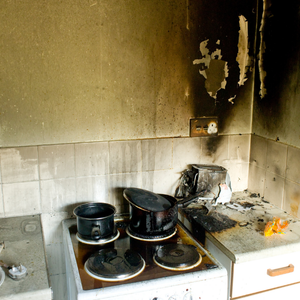
Restoring a fire-damaged home before selling in New York involves several critical steps to ensure both safety and marketability. The process begins with a professional inspection to evaluate structural integrity and identify lingering hazards such as smoke, soot, or water damage from firefighting efforts. Certified fire restoration specialists play a key role in cleaning, deodorizing, and repairing affected areas, using advanced methods to eliminate toxins and restore air quality. Once the home is deemed structurally sound, necessary repairs—like replacing damaged walls, flooring, or roofing—can proceed, ensuring compliance with local building codes and safety regulations. These foundational repairs not only make the property habitable but also enhance its appeal to potential buyers who value transparency and safety assurance.
After addressing the core restoration work, sellers should focus on cosmetic and presentation improvements to boost buyer interest. Repainting, updating fixtures, and replacing carpets can rejuvenate the home’s appearance, while thoughtful staging with neutral décor helps buyers envision themselves in the space. Enhancing curb appeal through landscaping, fresh paint, and clean pathways further strengthens first impressions. To attract modern buyers, consider energy-efficient upgrades, virtual tours, and social media marketing to showcase the property’s transformation. Documenting all restoration work, including receipts and inspection reports, reinforces buyer confidence and justifies the asking price. These steps collectively transform a fire-damaged property into a desirable, market-ready home while ensuring full compliance and transparency in the selling process.
Cost Considerations for Post-Fire Repairs in New York
In New York, the refurbishment of a home damaged by fire requires proportional financial planning, considering damage, property size, and local contractor rates. Of all the fire-related costs, the repairs of structural elements (walls, roofs, and support beams) tend to dominate. Moreover, additional expenses will likely result from smoke, water, and firefighting damage. To restore the home to a livable condition and to comply with the state’s housing regulations, specialized cleaning, deodorization, and safety inspections will be required. Evaluating the repairs’ financial feasibility or determining the likelihood of selling the property “as is” would be more accurate with the estimates from certified fire restoration contractors.
Cosmetic enhancements, such as changes to paint, flooring, and fixtures, will also positively impact a home’s marketability and should be considered by sellers along with restoration costs. Handling these costs and expenses is influenced by the extent of insurance coverage, policy limits, the status of claims, and the time it takes to recoup costs. Unresolved claims, however, can stall sales or create problems in negotiations, so sellers should coordinate with insurers proactively. After assessing repair costs, sellers consider potential balance scenarios, such as full restoration for a higher sales price or a discounted price for a quick sale to investors who will undertake renovations. These strategies, deployed in the current New York market, will maximize sellers’ returns and minimize their exposure to potential market risks.
Navigating Legal and Disclosure Requirements in New York
Selling a fire-damaged house in New York demands a meticulous grasp of the law and the corresponding disclosure obligations. New York’s intricately woven property law involves special considerations for fire-damaged property. Problems may arise as severe as noncompliance, disclosure omissions, or misinterpretation of the law. Legal demands illustrate the challenges a seller encounters within the New York real estate landscape. All of the listed elements must be addressed in order to sell the property as is, or explore opportunities to sell your home for cash in Long Island or nearby cities for a faster, more straightforward transaction that avoids the complexities of traditional sales.
Understanding Legal Implications of Selling a Burned House
Transacting a real estate property that has suffered from fire damage in New York State has unique obligations that need to be borne in mind. The state requires that you describe the real estate to the potential buyer, including the fire damage relative to the repairs, whether there are any unresolved damage issues, and the overall state of the property. If you do not describe the property adequately and accurately, you could lose money defending any legal action that may stem from the sale of the property, including an action to recover money from you, the buyer. In this regard, close collaboration with an estate attorney to document that encompasses all of the claims, including those that are related to the insurance, the repairs, and the damage assessments, is fundamental. This positive legality will lead to the buyer developing a positive rapport, which will facilitate buyer-seller negotiations and minimize potential conflicts that may emerge from the sale.
In addition to disclosing any potential visible fire damage, sellers must also assess which of the potential health and safety concerns, such as asbestos, lead paint, and mold, may have been aggravated due to the fire. Sellers may wish to obtain seller-initiated assessments and certifications by qualified professionals to strengthen their legal position and provide potential buyers with some assurance of safety and health. Furthermore, sellers must consider any open insurance claims and disputes prior to offering the property for sale, as these unresolved issues may tend to complicate the sale and/or prolong the closing. Listings must also be honest and accurately reflect the seller’s intended scope to prevent implied misrepresentation and the consequential potential damage to their reputation. Sellers can engage legal and real estate professionals with experience to provide the peace of mind that comes with assurance of compliance, open negotiations, and market disclosure while managing the complexities to minimize the potential legal exposure of fire selling in New York.
Maximizing Profit When Selling a Damaged Property
Strategically selling any damaged property, and particularly a fire-damaged home, requires advanced techniques and strategies as well as a profound knowledge of the New York property market. For sellers to succeed, local market situations, buyer expectations, and the unique challenges of fire damage have to be managed. This scenario prioritizes targeting buyers who are likely to perceive the property (even with damage) as a potential opportunity. Engaging with well-acquainted market professionals tends to facilitate a successful sale achievement. In this context, New York market-centric tips and knowledge would allow sellers to improve their property and sell it at a more beneficial price.
Tips for Attracting Buyers in the New York Market
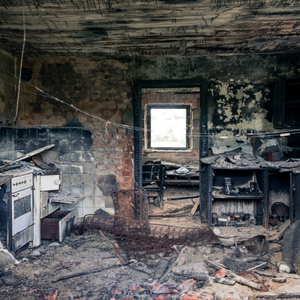
In the New York market—particularly for a fire-damaged home—transparency, tactical marketing, and an understanding of the pricing are three elements that go hand in hand. Marketing the property as a damaged home for sale still offers a unique chance to advertise its location in proximity to public transport, schools, and other vital resources. During the initial stage, professional photography that captures and portrays essential portions of the home can be an asset. Descriptive virtual home tours can replace the in-person home tour and showcase the home, thus creating that first impression that sells the home. An honest description of the repairs needed strengthens the credibility of the selling advertisement. Attention to detail pays off in driving the message to potential cash buyers. A buyer attracts the home to position their claim and recover their renovation costs. Lastly, buyers will appreciate a description of the repairs already made to the home and the unrealized potential value in a selling advertisement.
Price competitiveness is crucial for attracting genuine buyers. According to the damage and location, a fair price is more likely to attract interest and receive offers. Cash buyers in New York especially seek distressed properties for easy and quick transactions. Open houses and virtual viewings allow buyers to be engaged and have their questions answered. These are also good opportunities to demonstrate the property’s potential. Marketing distressed homes is a unique experience, and having a real estate partner in the New York market also helps reach the audience suited for the property.
Selling a fire-damaged property in New York can be made efficient with the right resources. In the future, having the right permits and repairs will be left for damage control in future transactions. Alongside fixing left damage, repairs will allow you to liquidate either generally marketed or in your planned time frame to an investor. A home warranty is a nice incentive and will appeal more to buyers that are looking to close quickly. Every property has its challenges, but they can be overcome to change a property’s narrative and a successful sale.
FAQs
What are the key factors to consider when selling a fire-damaged house in New York?
Understanding the effects on the value of the property, the different selling strategies like cash buyers, the legal obligations including disclosure, and the effective means aimed at getting buyers, entail the sale of a fire-damaged house in New York.
How can fire damage affect the valuation of a house in New York?
The degree of fire damage, impact on structural integrity, damage caused by smoke, and the damage caused by firefighting efforts all significantly affect the valuation of a property. Furthermore, the condition of the market and the property’s location also play a very important role in valuation.
Why is it important to comply with legal and disclosure obligations when selling a fire-damaged property?
To prevent and mitigate possible sales pitfalls, one ought to comply with all record-keeping- and disclosure-related obligations. To foster trust and comply with the law, all the property’s past insurance claims, condition, and liabilities ought to be disclosed.
What are effective strategies to market a fire-damaged house in New York?
Proactive approaches comprise pointing out advantages of the property, maintaining honesty in the listing such as repair information, establishing reasonable prices, and aiming at particular buyer categories like investors or cash purchasers. They can also use virtual tours effectively.
How should sellers handle repair costs before selling a fire-damaged home?
Sellers must carefully assess the costs of repairs, determining if they will perform the repairs or sell the property as-is. While undertaking repairs will enhance the property’s appeal, the costs need to be justified given the current market situation and the anticipated returns. It would be wise to speak with and assess the recommendations of restoration professionals, as well as consider pricing trends within the market.
Wondering how to sell a fire-damaged house fast? Prestige Home Buyers buys fire-damaged homes across New York for cash, no repairs or commissions required. We make the process quick, transparent, and hassle-free. Contact us (631) 336-9166 today to get a fair, no-obligation cash offer for your property.

